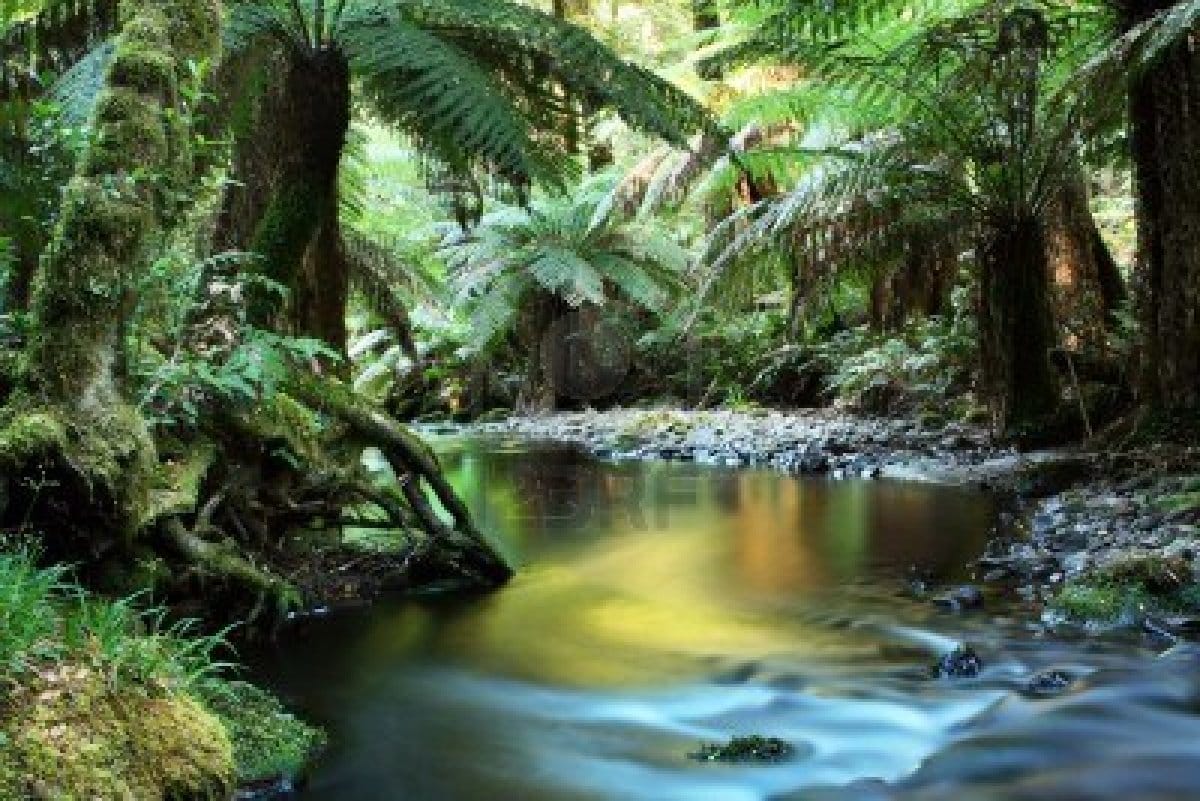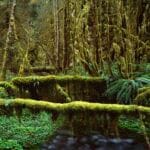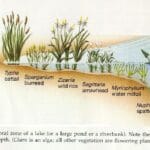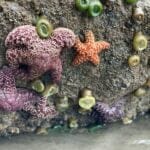A World of Hidden Biodiversity: Where Else Does Life Flourish?
Step into a world beyond the lush rainforests and uncover a hidden tapestry of biodiversity hotspots. These ecosystems burst with life, rivaling the Amazon’s legendary richness. From vibrant coral reefs that dance with marine wonders, to mangroves guarding our shores, and the mysterious depths of hydrothermal vents, these biodiverse havens hold secrets that will leave you in awe. Join us on an adventure to explore these hidden champions, their unique adaptations, and the critical roles they play in our planet’s delicate balance. Get ready to discover a world that matches the Amazon in its splendor and ecological significance, expanding your understanding of our planet’s incredible biodiversity.
A World Under the Waves: Coral Reefs – Rainforests of the Sea
Imagine diving into a world of vibrant colors, where fish flit in and out of coral formations that resemble underwater cities. These are coral reefs, the rainforests of the sea! They might cover less than 1% of the ocean floor, but they support an astounding 25% of all marine species! From tiny, colorful fish to sharks and sea turtles, coral reefs are bustling hubs of life. But they are much more than just a pretty sight; they provide food and livelihoods to millions of people through fishing and tourism. They also act as natural barriers, protecting coastlines from the brunt of storms and erosion.
Mangrove Forests: Guardians of the Coast and Climate
Where the rivers meet the sea, you’ll often find mangrove forests, a tangle of unique trees that thrive in salty water. These incredible ecosystems act like nurseries for a wide variety of fish and invertebrates, many of which are vital for local fisheries. But mangroves are also important for us on land. Their complex root systems act like natural buffers, protecting coastlines from erosion and even reducing the impact of tsunamis. And if that wasn’t enough, mangroves are incredibly efficient at absorbing carbon dioxide from the atmosphere, playing a crucial role in combating climate change.
Deep Sea Hydrothermal Vents: Life in Extreme Environments
What if we told you that life could thrive in complete darkness, under immense pressure, and fueled by chemicals rather than sunlight? That’s exactly what happens around deep-sea hydrothermal vents! These vents, found in volcanically active areas on the ocean floor, spew out superheated water rich in minerals. Astonishingly, this creates an environment where unique organisms, like giant tube worms and strange shrimp, flourish. Scientists believe that studying these ecosystems could even provide clues about the origins of life on Earth!
Kelp Forests: Underwater Towers of Life
Imagine diving through an underwater forest, with sunlight filtering through towering kelp that stretch towards the surface like giant, green skyscrapers. This is a kelp forest, an ecosystem as productive and diverse as any forest found on land! These underwater forests grow at an incredible rate, sometimes more than a foot per day! This rapid growth makes them vital for absorbing carbon dioxide, a crucial service in our changing climate. Kelp forests also provide food and shelter for a dazzling array of creatures, from sea otters and seals to countless fish and invertebrates.
A Delicate Balance: The Importance of Interconnectivity
While each of these ecosystems is remarkable in its own right, it’s important to remember that they are not isolated islands of biodiversity. What happens in one can impact the others. For example, the loss of mangrove forests can lead to increased sedimentation on nearby coral reefs, smothering the delicate corals and harming the entire ecosystem.
Protecting our Hidden Treasures
Just like the rainforests they rival in biodiversity, these unique ecosystems are facing increasing threats from pollution, climate change, and human activities. Recognizing their importance and working to protect them is crucial, not just for the countless species that call these places home, but for the health of our planet and, ultimately, our own well-being. Whether it’s supporting sustainable fishing practices, reducing our carbon footprint, or advocating for stronger environmental protections, we all have a role to play in ensuring these hidden treasures continue to thrive for generations to come.
What Ecosystem Rivals Only the Rainforest?
We all know rainforests are like the superstars of biodiversity, right? But what if I told you there’s another ecosystem out there, hidden beneath the waves, that gives rainforests a run for their money? That’s right, I’m talking about coral reefs!
Believe it or not, these underwater cities, though covering less than one percent of the ocean floor, provide a home for a whopping 25% of all the creatures living in the sea. That’s like squeezing a quarter of all the fish, crabs, and everything else in the ocean into a tiny apartment! From teeny-tiny shrimp to gigantic whales, coral reefs are teeming with life, offering food, shelter, and safe spaces for all sorts of marine creatures. They’re like bustling underwater cities, with just as much going on as a rainforest, but under the sea!
Why should we care about coral reefs? Well, here’s the thing:
- Think of them as the “busy bees” of the ocean. They’re essential for keeping the whole marine ecosystem in tip-top shape!
- For millions of people around the world, they’re a major source of food and income, supporting fishing and tourism industries.
- They act like natural seawalls, protecting our coasts from powerful storms and erosion.
- And believe it or not, they even play a part in regulating the climate, much like their terrestrial counterparts, the rainforests.
Sadly, like rainforests, coral reefs are facing some serious challenges, mainly from pollution, climate change messing with the ocean’s temperature, and, unfortunately, some unsustainable fishing practices. These precious ecosystems are incredibly delicate, and it’s up to us to protect them.
Scientists are hard at work trying to understand how to best protect these underwater treasures. There’s still much to learn, but one thing’s for sure: we need to act fast and work together if we want to ensure the survival of these vibrant ecosystems for future generations.
Beyond Rainforests: Exploring Ecosystems Rich in Biodiversity
You might be surprised to learn that the rainforest isn’t the only ecosystem bursting with life. While rainforests rightfully earn their fame as biodiversity hotspots, another contender exists, hidden beneath the ocean’s surface: coral reefs. These underwater cities, though covering less than a tiny 1% of the ocean floor, are like bustling metropolises, providing food and shelter for a quarter of all marine species. That’s a pretty impressive feat for such a small space! And it’s not just the sheer number of creatures that’s important; coral reefs play a crucial role in protecting our coasts from storms and erosion. They even provide us with food and support livelihoods through fishing and tourism.
But hold on, there’s another contender emerging from the salty shores – mangrove forests. These incredible ecosystems thrive where rivers meet the sea, their roots submerged in saltwater. Mangroves are the guardians of our coastlines, acting as natural barriers against erosion and even tsunamis. Their tangled roots act like a net, slowing down waves and protecting communities. And if that wasn’t enough, mangroves are also champions in the fight against climate change, absorbing and storing vast amounts of carbon dioxide from the atmosphere.
So, while rainforests rightfully hold the crown for biodiversity on land, it’s clear they aren’t alone. Coral reefs and mangrove forests, in their own unique ways, are teeming with life and provide essential services to our planet. These underwater and coastal havens show us that the richness of the natural world knows no bounds.
Key Points: Unveiling Nature’s Hidden Gems
Coral Reefs:
- Cover less than 1% of the ocean floor but support 25% of marine species.
- Provide food and livelihoods through fishing and tourism.
- Act as natural barriers, protecting coastlines from storms and erosion.
Mangrove Forests:
- Thrive in salty water, acting as nurseries for marine species.
- Protect coastlines from erosion and tsunamis.
- Absorb carbon dioxide, mitigating climate change.
Deep Sea Hydrothermal Vents:
- Support unique organisms that thrive in extreme environments.
- May provide insights into the origins of life on Earth.
Kelp Forests:
- Highly productive and diverse ecosystems, comparable to forests on land.
- Absorb carbon dioxide and provide food and shelter for various species.
Interconnectivity:
- Ecosystems are interconnected, with changes in one affecting others (e.g., mangrove loss impacting coral reefs).
Threats and Conservation:
- Ecosystems face threats from pollution, climate change, and human activities.
- Protection is crucial for the health of these ecosystems, our planet, and human well-being.
- Revolution Space: Disruptive Ion Propulsion Transforming Satellites - April 24, 2025
- Race Through Space: Fun Family Game for Kids - April 24, 2025
- Unlocking the Universe: reading about stars 6th grade Guide - April 24, 2025
















